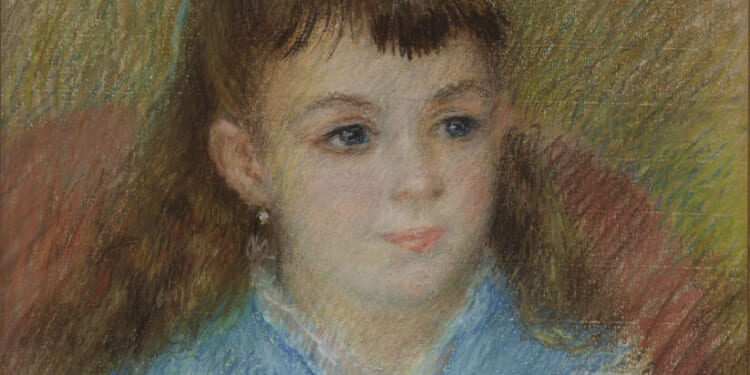
“Egypt: Influencing British Design, 1775–2025” at Sir John Soane’s Museum, London (through January 18, 2026): While browsing the Greek and Roman galleries at the Metropolitan the other day, I came across a stunning mosaic floor dating to A.D. 130–150. Remarkably crafted, the mosaic caught my eye for another reason: the two central figures in Egyptian-style dress. The land of the Pharaohs has held an enduring fascination for other cultures, and Georgian and Regency Britain was no exception. While Thomas Hope’s Egyptian Gallery at his house in London is perhaps the most prominent example of this trend, others abound. The Soane Museum’s new exhibition “Egypt: Influencing British Design, 1775–2025” provides a worthy overview. —BR

“From Exile to Avant-Garde: The Life of Princess Natalie Paley,” at Hillwood Estate, Museum & Gardens, Washington D.C. (through January 4, 2026): Washington D.C.’s Hillwood Estate is the former home of Marjorie Merriweather Post, once the richest woman in America and an obsessive collector of Imperial Russian art and material culture, much of which she bought secondhand during a sojourn in the Soviet Union in the 1930s. Hillwood’s recent acquisition of a cache of materials relating to Natalie Paley, a first cousin of Tsar Nicholas II who reinvented herself in exile as a model, actress, and muse, is on display in a new exhibition, bringing these 355 items together with Post’s existing Paley-family holdings. This tastefully curated family reunion tells a story of Romanov court intrigue, interwar exile, and Parisian glamor through paintings, haute couture dresses, Sèvres porcelain, Fabergé confections, and more. Expect a dizzying who’s who of friends and lovers (the line is often blurred), from Jean Cocteau to Antoine de Saint-Exupéry to Erich Maria Remarque. —IS

“Milton Avery: The Figure,” at Karma, New York (through December 20): Those who know Milton Avery only for his distilled, color-rich landscapes may be surprised by “The Figure,” a sizeable survey of Avery’s portraiture and figurative work, now on view at Karma. With paintings and drawings ranging from the 1920s until his death in 1964, the exhibition reveals an artist who brought expression and idiosyncrasy to the fore. Avery allowed the characteristics of his sitters to shine through the thinness of his pigments, an economy of means that came out of economic necessity. Documenting the visitors who came by the apartment studio he shared with his artist-wife Sally Michel on New York’s West Side, along with summers spent with his family on the Atlantic coast, the exhibition shows the social side of this reserved modern master. —JP

“Becoming Renoir,” featuring Anne Distel and Sarah Lees in conversation, at the Morgan Library & Museum (November 12): The Morgan is currently hosting “Renoir Drawings” (through February 8, 2026), a show dedicated to the artist’s sketches, watercolors, and pastels. On Wednesday, the two curators of the exhibition, Anne Distel of the Musée d’Orsay and the Morgan’s research associate Sarah Lees, will discuss the place of Auguste Renoir’s works on paper within his broader oeuvre and life. Those lucky enough to have secured in-person tickets, now sold out, will have the exhibition all to themselves prior to the start of the talk; the rest of us will have to content ourselves with the livestream. For those who can’t make it, worry not: Look for James Panero’s full review of “Renoir Drawings,” forthcoming in The New Criterion of January 2026. —AG
Dispatch:
“Aida & the ayatollahs,” by George Loomis. On a revival of Aida, at the Paris Opera.
From the Archives:
“The greatest Victorian,” by Roger Kimball (October 1998). On Walter Bagehot.

















